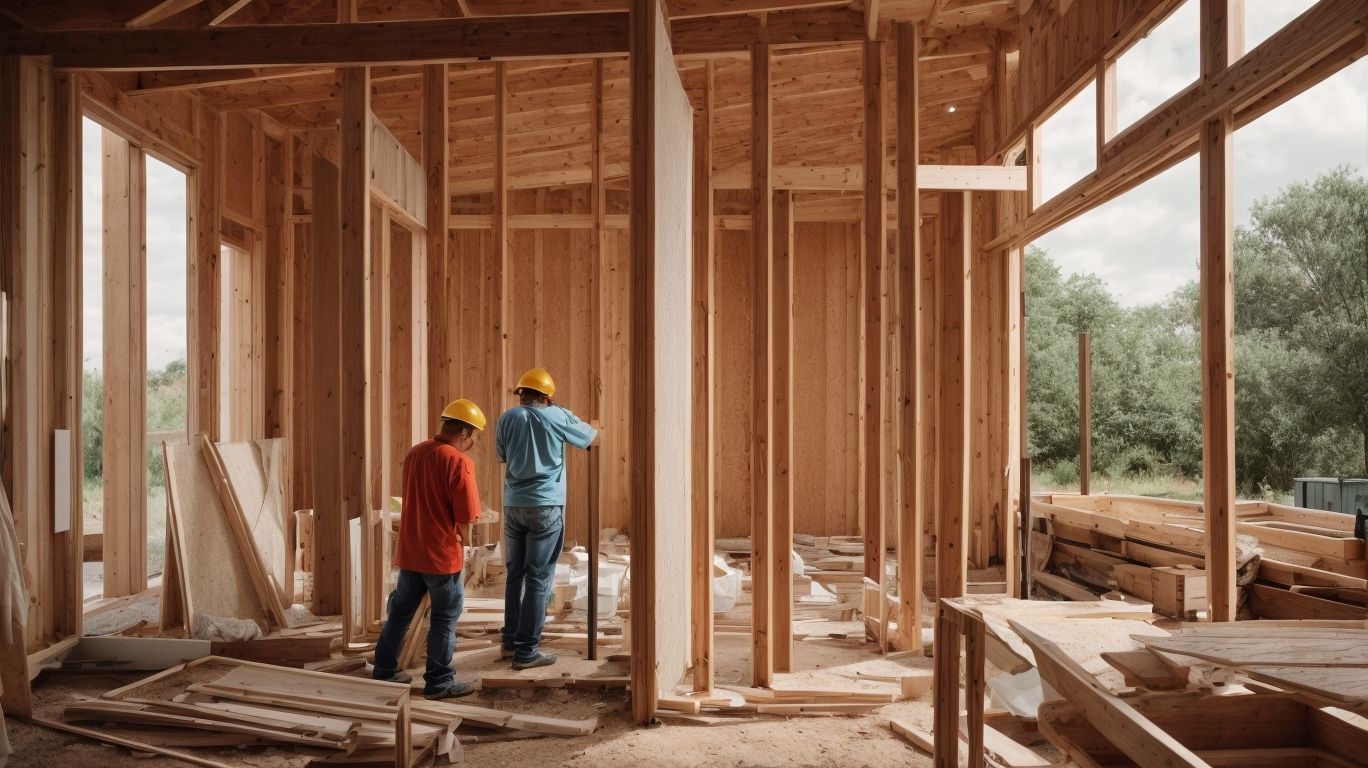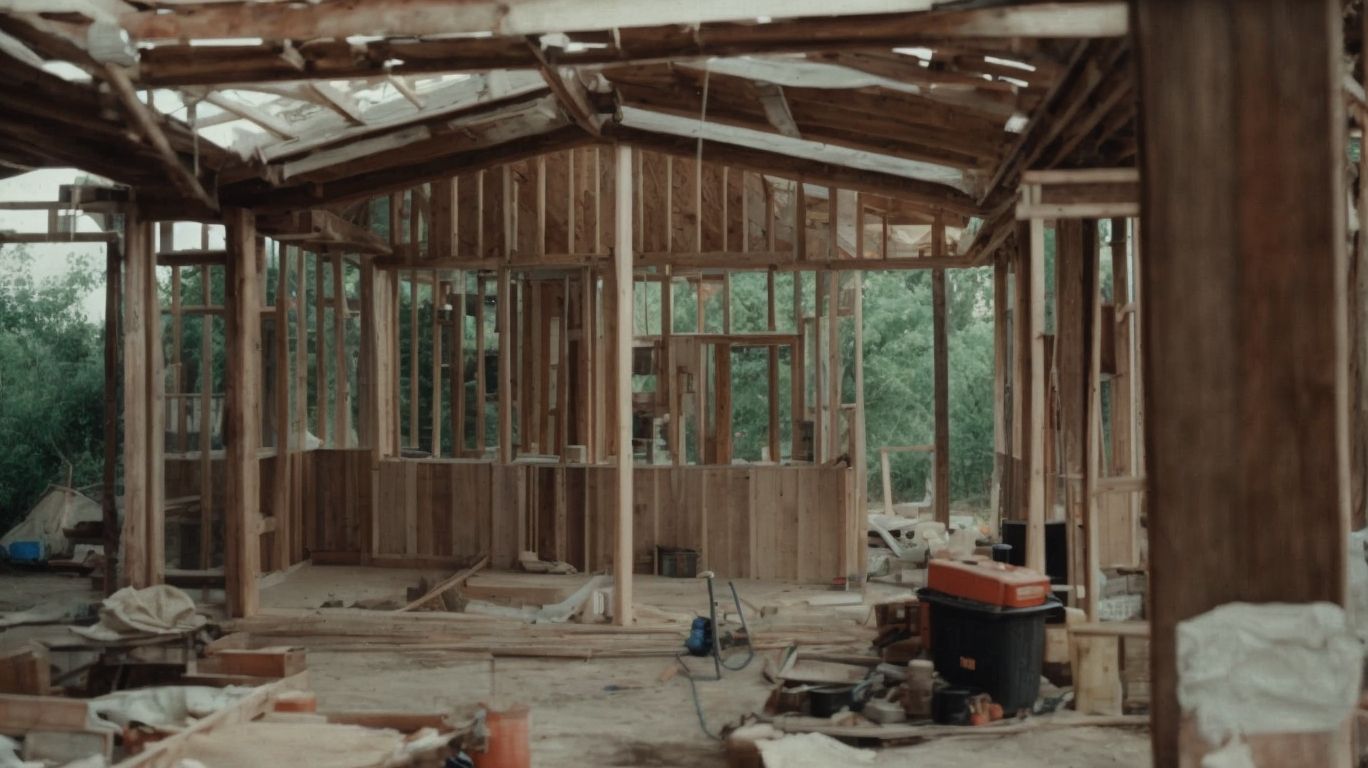
Managing Home Remodeling Projects: The Role of Structural Engineers
Home remodeling projects are a popular way for homeowners to enhance the functionality, aesthetics, and value of their homes. Whether it’s a kitchen remodel, bathroom renovation, or room addition, these projects often involve structural changes that require the expertise of a qualified structural engineer.
In this comprehensive guide, we will explore the crucial role of structural engineers in home remodeling projects. From understanding the responsibilities of structural engineers to the different types of remodeling projects they are involved in, as well as the common structural issues they address, we will delve into the essential aspects of their involvement.
We will also discuss how structural engineers contribute to the planning and construction stages of remodeling projects and provide valuable insights on how homeowners can find and engage a qualified structural engineer for their specific project needs. If you’re considering a home remodeling project, understanding the role of a structural engineer is essential for ensuring the success and safety of your undertaking.
What Is Home Remodeling?
Home remodeling, also known as renovation or home improvement, involves the process of making changes to an existing residential structure to enhance its functionality, aesthetics, or value.
This can include structural modifications, such as room additions, kitchen or bathroom upgrades, or even expanding the living space. The purpose of home remodeling is to create a more comfortable and personalized living environment while increasing the property’s market value. It allows homeowners to incorporate modern technologies, improve energy efficiency, and address any wear and tear or outdated features.
Home remodeling also presents an opportunity to express individual style preferences and adapt the living space to evolving lifestyle needs.
Why Is a Structural Engineer Necessary for Home Remodeling Projects?
A structural engineer plays a crucial role in home remodeling projects due to their specialized engineering expertise and ability to ensure the structural integrity and safety of the renovated property.
They possess the technical knowledge and skills to assess the existing structure, propose necessary modifications, and ensure that the renovated design meets the required building codes and standards. Their contributions also include collaborating with architects, contractors, and other professionals to create a cohesive plan that integrates the desired renovations while maintaining the structural stability of the home.
Ultimately, their expertise is essential in guaranteeing that the remodeling process enhances the property’s functionality and aesthetics without compromising its structural integrity.
What Are the Responsibilities of a Structural Engineer?
The responsibilities of a structural engineer encompass an array of critical tasks, including conducting structural assessments, designing solutions for structural modifications, and ensuring compliance with building codes and regulations.
They play a crucial role in analyzing the structural integrity of buildings, bridges, and other infrastructure, and provide innovative solutions for renovation management. Structural engineers are responsible for collaborating with architects and construction teams to ensure that the design solutions align with the project’s requirements and comply with relevant building codes and standards.
Their expertise extends to evaluating the environmental impact and sustainability of structural solutions, demonstrating an essential consideration for the long-term functionality and safety of the built environment.
What Are the Different Types of Home Remodeling Projects?
Home remodeling encompasses a diverse range of projects, including kitchen remodeling, bathroom renovation, room additions, and various construction initiatives aimed at enhancing the functionality and appeal of residential properties.
These projects can greatly transform the living space, adding value to the property while reflecting the homeowner’s personal style. Renovation plans often involve updating outdated features, improving energy efficiency, and optimizing space utilization. It’s crucial for homeowners to carefully consider their goals, budget, and timeline when embarking on a remodeling journey.
Whether it’s a minor renovation or a full-scale construction project, understanding the scope and benefits can help in making informed decisions and achieving the desired outcomes.
Kitchen Remodeling
Kitchen remodeling involves the comprehensive renovation and redesign of the kitchen space, encompassing aspects such as layout modifications, appliance upgrades, and aesthetic enhancements, with careful consideration of the associated renovation costs and the overall process.
Renovating a kitchen often begins with setting a budget that covers home renovation costs, including labor, materials, and any unforeseen expenses. The renovation process typically includes:
- Demolition
- Structural modifications
- Electrical and plumbing updates
- Selecting building materials such as cabinets, countertops, and flooring
The design aspects of a kitchen remodel, such as color schemes, lighting fixtures, and backsplash selections, play a crucial role in creating a cohesive and visually appealing space.
Bathroom Remodeling
Bathroom remodeling involves the renovation and improvement of bathroom spaces, often requiring meticulous planning, obtaining building permits, and the development of comprehensive renovation plans to ensure the successful execution of the project.
Structural engineering expertise is crucial to ensure that the renovation plans meet the building regulations and safety standards. Homeowners should be aware that building permits are typically necessary for significant changes in the bathroom layout, plumbing, or electrical systems. Compliance with building codes is essential to avoid legal issues and to ensure that the remodeled bathrooms are safe and structurally sound. Therefore, consulting with professionals who understand these requirements is key to a successful bathroom remodel.
Room Additions
Room additions involve the expansion of existing residential spaces through construction, requiring detailed construction drawings, meticulous project oversight, and compliance with building codes to seamlessly integrate the new structure with the existing property.
The complexity of room addition projects lies in the need to navigate various construction regulations and zoning restrictions. Proper renovation management is essential to ensure that the new addition not only enhances the living space but also aligns with the aesthetic and structural aspects of the original property.
Considering factors such as plumbing, electrical work, and HVAC systems is crucial to ensure a seamless integration of the new space into the existing infrastructure.
What Are the Common Structural Issues in Home Remodeling Projects?
Home remodeling projects often encounter common structural issues such as load-bearing wall modifications, foundation problems, and roofing concerns, necessitating careful attention to building safety and structural integrity throughout the renovation process.
When these issues are not properly addressed, they can pose significant risks to the occupants and the property itself. It is crucial for homeowners and renovators to conduct thorough risk assessments to identify potential structural weaknesses and implement appropriate solutions. Neglecting these issues can lead to safety hazards, increased costs, and even legal implications.
By prioritizing building safety and rigorous assessment of renovation-related structural concerns, homeowners can ensure the long-term integrity and stability of their renovated properties.”
Load-Bearing Walls
Load-bearing walls are a critical structural element in residential properties, and any modifications or renovations to these walls require thorough building inspection, meticulous planning, and a focus on preserving the overall structural integrity of the property.
These load-bearing walls bear the weight of the entire structure, ensuring the stability and safety of the building. Building inspection plays a crucial role in identifying any potential weaknesses or issues in these walls. It is essential to prioritize the structural integrity of a property to prevent any compromise to its stability.
When considering renovations, the impact on load-bearing walls should be carefully evaluated to maintain the structural soundness of the building.
Foundation Problems
Foundation problems in residential properties often necessitate comprehensive renovation plans, thorough structural analysis, and strategic solutions to address the underlying issues and ensure the long-term stability and safety of the structure.
These renovation plans should encompass a detailed assessment of the existing foundation, considering factors such as soil composition, water drainage, and previous structural modifications. Structural analysis plays a crucial role in identifying the root causes of the problems, determining the extent of damage, and devising appropriate remedial measures.
Implementing effective solutions requires a deep understanding of construction materials and their compatibility with the existing structure, ensuring a seamless integration of the new elements with the original foundation.
Roofing Concerns
Roofing concerns in home remodeling projects require careful consideration of building permits, adherence to renovation timelines, and the implementation of appropriate roofing solutions to ensure the structural integrity and durability of the property.
These factors play a crucial role in meeting building renovation code compliance standards and ensuring that the roofing work is carried out effectively. Obtaining the necessary building permits is essential to avoid legal issues and ensure that the roofing renovations are in line with the local regulations.
Sticking to renovation timelines is vital for the overall project schedule, preventing delays and cost overruns. The selection of suitable roofing materials and techniques also influences the long-term performance and resilience of the roof, impacting the property’s value and safety.
How Do Structural Engineers Help in the Planning Stage of Home Remodeling?
Structural engineers play a pivotal role in the planning stage of home remodeling projects by conducting thorough structural assessments, creating comprehensive structural drawings and plans, and providing essential input to guide the effective execution of the renovation process.
Their expertise in project planning ensures that the structural aspects of the renovation project are meticulously examined and accounted for. Their ability to assess potential risks and propose suitable mitigation measures is invaluable in safeguarding the integrity and safety of the structure.
Their involvement in creating precise structural drawings and plans aids in visualizing and communicating the proposed changes, ultimately contributing to the successful realization of the renovation vision. With their comprehensive oversight, structural engineers facilitate seamless integration of the structural elements into the overall renovation project planning.
Conducting Structural Assessments
Conducting thorough structural assessments is a critical aspect of the planning stage in home remodeling, ensuring the identification of potential structural issues, the development of effective renovation plans, and a focus on enhancing the overall structural safety of the property.
These assessments play a crucial role in guiding renovation planning by providing insights into the current condition of the structure, allowing for informed decision-making regarding necessary repairs or improvements. Prioritizing structural safety considerations helps in preventing potential hazards and ensuring the longevity of the renovated property.
By addressing any structural weaknesses during the planning phase, the renovation project can be carried out with a thorough understanding of the property’s structural integrity, ultimately mitigating risks and ensuring a successful remodeling outcome.
Creating Structural Drawings and Plans
Creating detailed structural drawings and comprehensive plans is essential in the planning stage of home remodeling, facilitating precise execution, regulatory compliance, and the seamless integration of new design elements into the existing structure.
These drawings and plans serve as the roadmap for construction coordination, guiding the renovation project from conceptualization to completion. They play a crucial role in obtaining renovation project permitting, ensuring that the proposed changes meet safety and building code requirements. They aid in effective communication of design intent to stakeholders, enabling clear visual representation of the proposed modifications and fostering alignment among all parties involved in the renovation process.
What Is the Role of a Structural Engineer During the Construction Phase?
During the construction phase, a structural engineer provides critical support by inspecting the worksite, offering guidance to contractors, and ensuring the meticulous implementation of structural modifications and design solutions to maintain the integrity and safety of the renovated property.
They play a pivotal role in overseeing the construction process, ensuring compliance with building codes, and coordinating with various stakeholders to address any structural challenges that may arise. Their expertise in analyzing complex structural systems and their understanding of construction materials and techniques enable them to identify potential issues and propose effective solutions, contributing to the overall success of the construction project.
Their involvement in construction inspections helps to verify the quality of workmanship and adherence to construction standards, ultimately leading to a sound and durable structure.
Inspecting the Worksite
Conducting thorough inspections of the worksite is integral to the role of a structural engineer during the construction phase, ensuring compliance with construction drawings, maintaining structural integrity, and identifying any deviations from the approved renovation plans.
These inspections play a crucial role in upholding building safety standards and preventing potential hazards. By meticulously examining the construction processes and materials, the structural engineer can identify any potential compliance issues and take proactive measures to address them, thereby contributing to the overall quality and safety of the structure.
These inspections also provide an opportunity to verify that the construction activities align with the specified standards and codes, facilitating a seamless progression through the construction phase.
Providing Guidance and Support to Contractors
Offering essential guidance and support to contractors, structural engineers ensure the effective implementation of structural solutions, adherence to construction management plans, and the seamless execution of the planned modifications within the renovation project.
Their expertise in construction management allows them to oversee the structural aspects of the project, ensuring that the building renovation design aligns with safety and regulatory standards.
Their role in renovation project coordination involves collaborating with various stakeholders, such as architects and builders, to integrate structural elements seamlessly into the overall renovation plan. By providing technical insights and innovative solutions, structural engineers play a pivotal role in driving the successful completion of building renovation projects.
How Can Homeowners Find a Qualified Structural Engineer for Their Project?
Homeowners seeking a qualified structural engineer for their remodeling project can explore reputable engineering firms, seek recommendations from industry professionals, and verify the engineer’s expertise and experience in handling similar renovation endeavors.
They should carefully assess the structural engineer’s knowledge of engineering principles and their ability to oversee the project with a keen eye for construction risk management. Homeowners should prioritize finding an engineer who has a proven track record in successfully completing renovation projects similar in scope and complexity to their own.
By prioritizing these factors, homeowners can feel confident in selecting a structural engineer equipped to ensure the safety and structural integrity of their renovation project.
How Much does Hiring Structural Engineers Cost?
The cost to hire structural engineers depends on the scope of work, size of the building, as well as the complexity of the proposed modifications. Take a 2-story single-family house for example. Let’s say the homeowner wants to add a 500 square feet rear addition to an existing 1500 square feet residence on a slight slope. The homeowner gets a $6500 quotation from SF Bay Engineering as well as various other quotations from different engineers/engineering firms with price tags ranging from $2500 to $13000. We strongly advise against choosing an engineer based on the quotation. This is because a more efficient design on a single type of framing members could easily save over $1000, and the 500 square feet addition could easily have over 10 different types of framing members. Each better / more efficient detailing could be saving significant time, material cost and labor cost. A better designed foundation system could easily save over $10,000 compared to a conservative one. All in all, a better structural design for the 500 square feet addition could reasonably save well over the price tag differential, and we recommend homeowners to talk to each engineer to find out which one makes the most sense.




No Comments